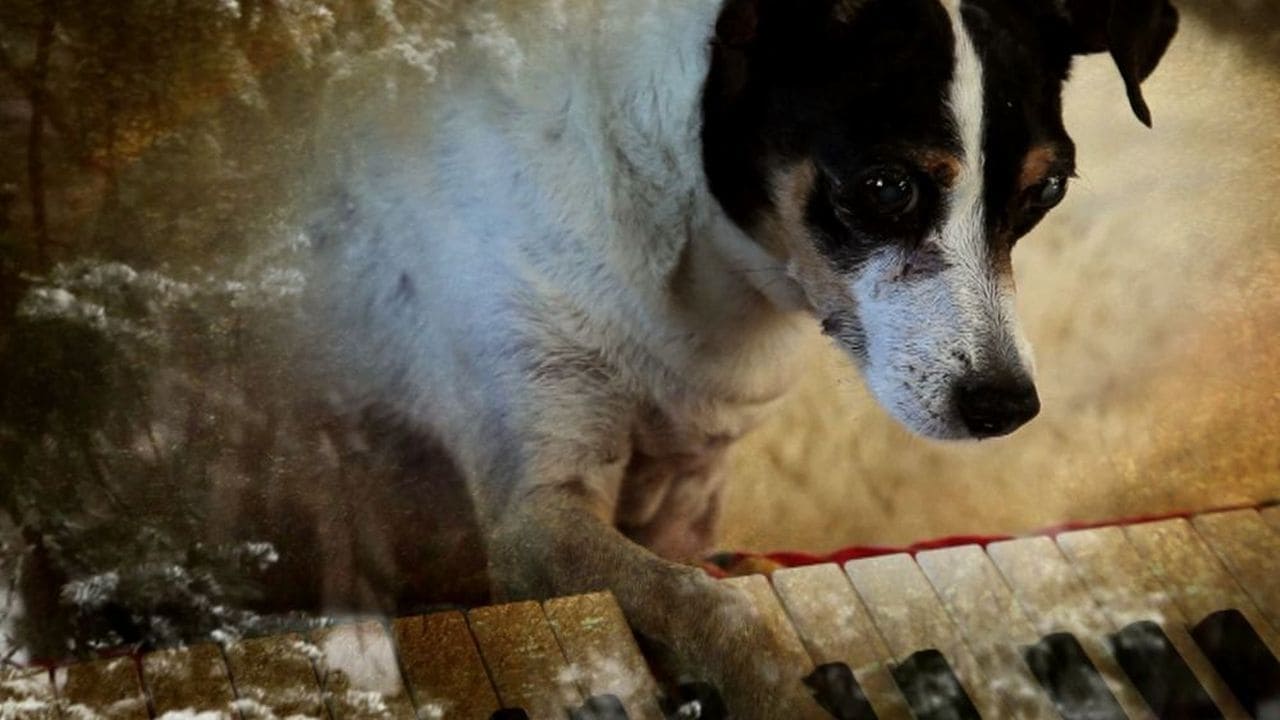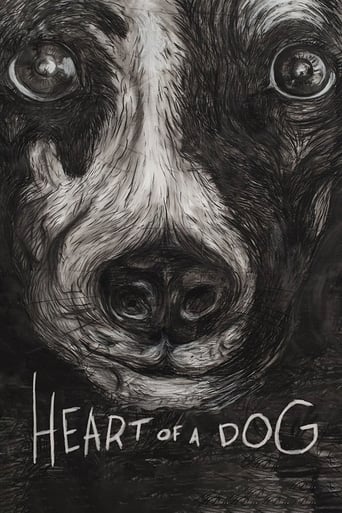

This movie is the proof that the world is becoming a sick and dumb place
... View MoreBest movie of this year hands down!
... View MoreI really wanted to like this movie. I feel terribly cynical trashing it, and that's why I'm giving it a middling 5. Actually, I'm giving it a 5 because there were some superb performances.
... View MoreThe movie's neither hopeful in contrived ways, nor hopeless in different contrived ways. Somehow it manages to be wonderful
... View MoreStraight into my soul, her voice, the imagery and the sheer poetry of the strength of love and loss and coming into being.... and leaving.
... View MoreAcclaimed Media Artist Laurie Anderson has created another extremely imaginative and intriguing film that will leave viewers spellbound. Her style of storytelling is so unique and at times disturbing that you will wonder if what you'd just seen is real or a product of a mind that has recently passed beyond mortality.The wife of music legend Lou Reed uses many literary passages, music and images to tell the story of the life and passing of her dog Lolabelle. But it's much more than that. She infuses her own life stories and experiences to create this moving piece of artistic cinema.You will laugh, possibly cry, and think. You will wonder, imagine and think. You may find yourself scared and freed from reality simultaneously but most of all you will think.If you are a fan of Batman or Spiderman films, pass on this one. If you are a thinking free spirit relax and enjoy.
... View MoreIn her poetic film collage essay, Laurie Anderson is more beautifully and thoughtfully herself than ever. She has had a long career, but was most well-known in the 80's as an experimental performance artist, composer, and musician who especially explored the mix of spoken word and music. Those who know her albums such as "Big Science" and "Home of the Brave" will appreciate the return of the fragmented rhythm and quizzical tone of Anderson's speech, opening with voice-over sentences such as "This is my dream body – the one I use to walk around in my dreams."Despite the film's seemingly stream-of-conscious, no-plot, hodge- podge approach, Anderson has meaningful ideas to express, and she's woven together an elegant and smartly structured tone-and-picture poem. The movie combines her personal stories and musings with quotations from renowned philosophers, ink drawings on paper, printed words, animation, scratchy old 8mm home-movie clips, new footage of landscapes, surveillance camera footage with time codes, graphic images such as computer icons, and her ingenious use of music. As always, Anderson excels at language, and here she combines various types of on-screen text with her own lyrical voice-over. I often leave a movie wanting to run home and download the soundtrack, but in this case I am yearning for a transcript. These are words worthy of reading and contemplating. "Try to learn how to feel sad without being sad," is just one of the many sentences that could use more time to resonate than one viewing allows.But one of the surprises of this project may be Anderson's sophisticated and inventive cinematography. As the film explores a variety of deaths – the death of Anderson's dog, the death of her mother, the death of her husband (Lou Reed), and the mass deaths of 9/11 in New York, it seems the movie is often shedding its own tears. Many sequences are shot through a pane of glass that is dripping with water, like life itself is crying. And then she turns footage of an ocean upside down, with the foreground still raining, so the sea that has become the sky is weeping too. In front of everything, Anderson seems to be saying, is a gentle, pervasive sadness. And yet, the movie is not even remotely maudlin. It discusses 9/11 in way that actually adds fresh insight, which seems impossible after so many anniversaries full of remembrance ceremonies, and so many other films that have also integrated that tragic event. Perhaps the strongest moment in Anderson's film is when she takes her dog outdoors in a big field and enjoys watching her run and play in tall grass and aromatic dirt, as dogs do. And the camera pans up to the bright blue sky; it is such a beautiful day. And then we see pretty white trails in the sky, moving in circles. Anderson tells us they are birds. And then she sees that they are hawks. And she describes the look in the eyes of her dog, Lolabelle, as the dog peers up and realizes that she is prey. The dog understands that these birds have come for the purpose of killing her. And Anderson bemoans the new reality that now the dog must not only be aware of the ground and the grass and the other earthbound creatures, but also that huge, untouchable expanse of sky. The sky is now a danger. And the dog will never view the sky the same again. Cut to footage of 9/11 as Anderson compares her dog's feeling to hers, and ours, when we suddenly understood that "something was wrong with the air"; the sky brought danger and those flying planes were there for the purpose of killing us. And "it would be that way from now on." Anderson goes on to talk about the strangeness of living in a post- 9/11 surveillance state, where we are always being recorded. But she does not take the obvious path of complaining about the social injustice. Instead, she takes a clever twist and points out that all your actions are now data. And that data is always being collected, but it will not be watched until after you commit a crime. Then your story is pieced together, in reverse – footage of where you went and what you did, being viewed backwards from the most recent moment. And then she throws in a quote from Kierkegaard: "Life can only be understood backward but must be lived forward." And intermixed with philosophy, Anderson keeps her wry sense of humor. At one point, she talks about a dream in which she gives birth to her dog. She illustrates the tale with bizarre comic drawings, and then she tells us that the dog looks up at her and says, "Thank you so much for having me," as if it has just been invited to a tea party. Ha. Later she talks about her own childhood memory of a trauma and reveals how our minds naturally clean up memories, leaving out certain details, and in that way you are holding onto a story and every time you tell the story, you forget it more. Cut to the computer icon of Missing File. The associations keep piling up, and they do indeed add up. It uses a complex and intellectual style, very astutely, to access emotional and intimate realities that are difficult to reach through overt methods. This film does tell a story, in its own subtly layered way. It is sometimes a meditation on how to go on living despite despair – "the purpose of death is the release of love," but it is also clearly Laurie Anderson's own personal tale. This is a tender memoir. It's Anderson's love story, about her dog, her mother, her husband, and her city. In the most uncommon and evocative way, this film has heart.
... View MoreNow Laurie Anderson isn't really a musician, she is an artist using all kinds of modern media and her concerts are more impressive than her audio CDs. I wasn't really sure what to expect of this film and fortunately it isn't as artsy as many of the works of video artists often are are, where - as usually in modern art - you have to make sense of the material yourself, somehow; no, this is a very watchable film with Laurie spreading out memories and thoughts about her rat terrier Archie and her mother, both of which have passed away rather recently. Also of course, her husband, the rock musician Lou Reed, had died only 2 years ago so the topic of death seems a very natural one in those circumstances. Still, this is not a sad or bitter film but at best maybe a melancholic but often also a happy one with an emphasis on cheerful memories. It is a meditation on life and death spoken in her very soft singsong voice.
... View More